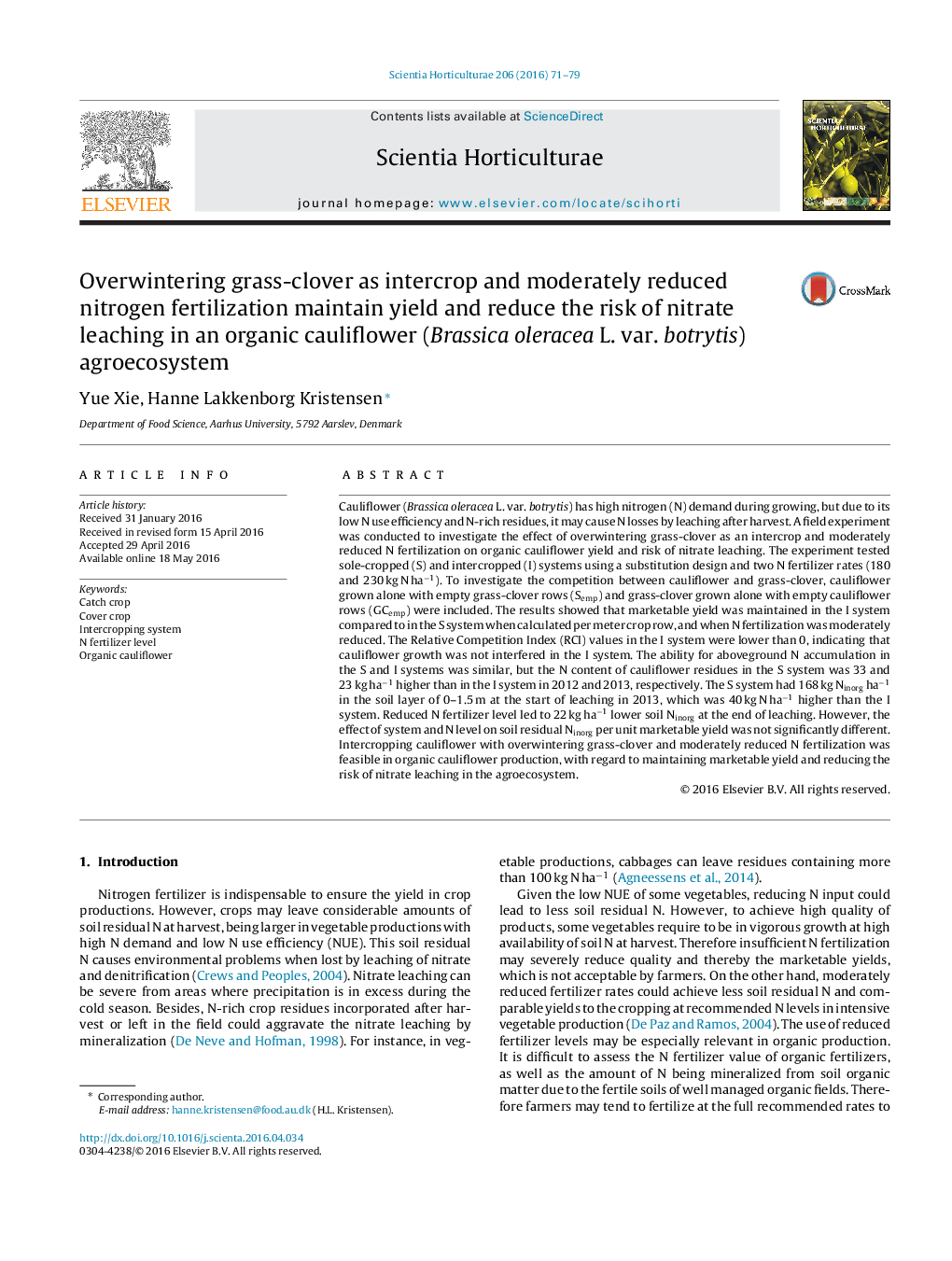| کد مقاله | کد نشریه | سال انتشار | مقاله انگلیسی | نسخه تمام متن |
|---|---|---|---|---|
| 4566025 | 1628792 | 2016 | 9 صفحه PDF | دانلود رایگان |

• Intercropping with moderately reduced N level was tested in organic production.
• Cauliflower growth was not hampered by interspecific competition and reduced N level.
• Soil inorganic N in late autumn was reduced by intercropping.
• Reduced N level decreased soil inorganic N in next spring.
Cauliflower (Brassica oleracea L. var. botrytis) has high nitrogen (N) demand during growing, but due to its low N use efficiency and N-rich residues, it may cause N losses by leaching after harvest. A field experiment was conducted to investigate the effect of overwintering grass-clover as an intercrop and moderately reduced N fertilization on organic cauliflower yield and risk of nitrate leaching. The experiment tested sole-cropped (S) and intercropped (I) systems using a substitution design and two N fertilizer rates (180 and 230 kg N ha−1). To investigate the competition between cauliflower and grass-clover, cauliflower grown alone with empty grass-clover rows (Semp) and grass-clover grown alone with empty cauliflower rows (GCemp) were included. The results showed that marketable yield was maintained in the I system compared to in the S system when calculated per meter crop row, and when N fertilization was moderately reduced. The Relative Competition Index (RCI) values in the I system were lower than 0, indicating that cauliflower growth was not interfered in the I system. The ability for aboveground N accumulation in the S and I systems was similar, but the N content of cauliflower residues in the S system was 33 and 23 kg ha−1 higher than in the I system in 2012 and 2013, respectively. The S system had 168 kg Ninorg ha−1 in the soil layer of 0–1.5 m at the start of leaching in 2013, which was 40 kg N ha−1 higher than the I system. Reduced N fertilizer level led to 22 kg ha−1 lower soil Ninorg at the end of leaching. However, the effect of system and N level on soil residual Ninorg per unit marketable yield was not significantly different. Intercropping cauliflower with overwintering grass-clover and moderately reduced N fertilization was feasible in organic cauliflower production, with regard to maintaining marketable yield and reducing the risk of nitrate leaching in the agroecosystem.
Figure optionsDownload as PowerPoint slide
Journal: Scientia Horticulturae - Volume 206, 15 July 2016, Pages 71–79